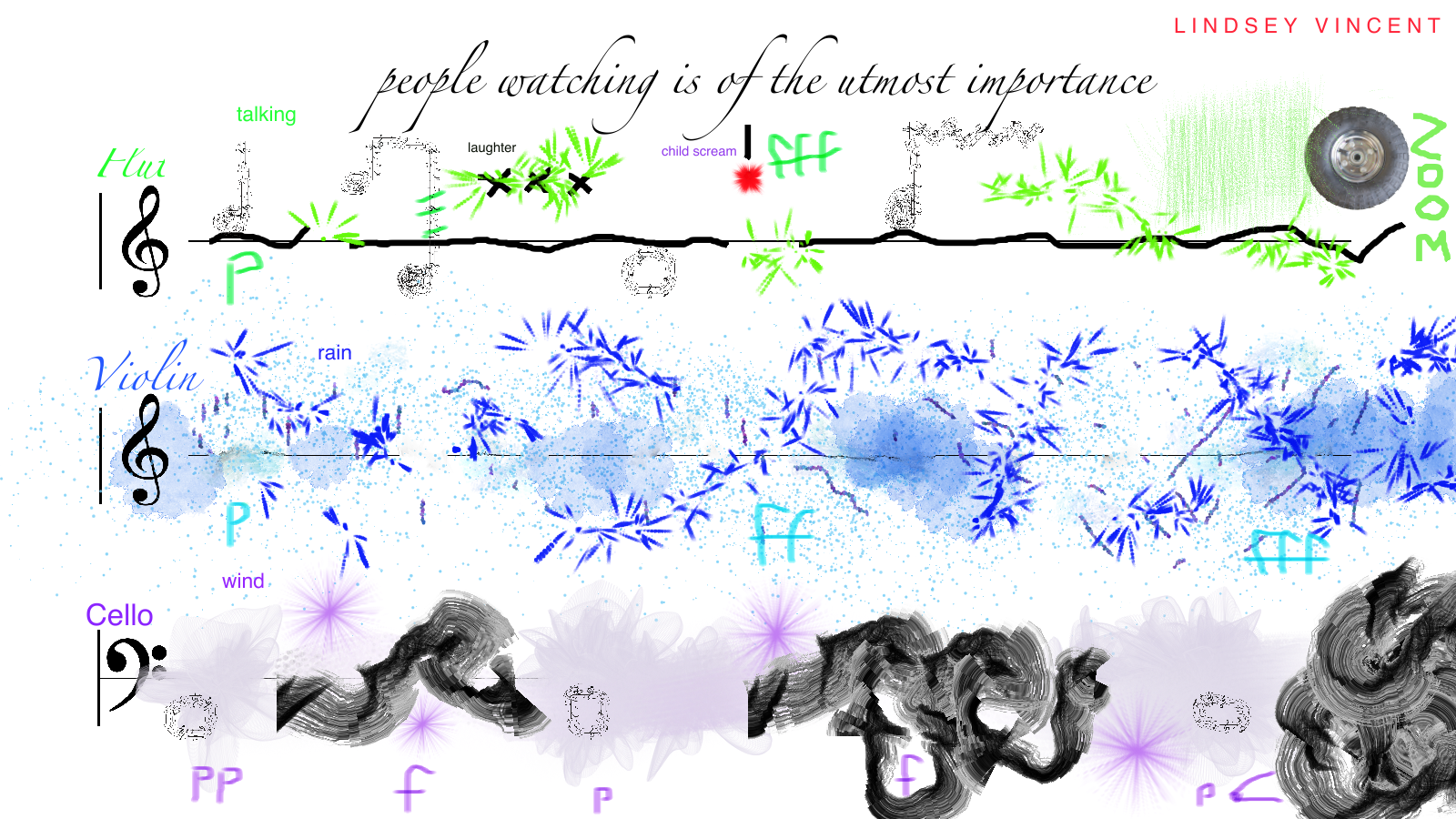
Graphic Scores
Covidtine (2020)
Piano and Toy Piano
A special thank you to Dr. Adam Marks, for whom the piece was written. The piece can be heard on Adam’s One Page Piano Piece Facebook Page or YouTube. The about and intensions of this piece are below the score.
Duration: 7-8 minutes
ABOUT
This piece was inspired by my quarantine experience (and this being a quarantine project) from COVID-19, which, despite continuing with my schoolwork, has been closely related to the five stages of grief: denial, anger, bargaining, depression, and acceptance.
I decided I wanted the score to resemble COVID-19 cell and this resulted in the solution of a graphic score! The title, Covidtine, is a smush-together-ism of the words ‘Covid’ and ‘quarantine’.
Fun fact: The purple pizzicato notes actually spell out words that were given notes based on the 12 tone row if read in treble clef! The words are:
COVID-19 → 2188319 → BA#FFCA#F#
QUARANTINE → 3704006804 → CEAC#C#AD#FAC#
RESTRICTIONS → 445648268105 → C#C#DD#C#FBD#FA#AD
LOCKDOWN → 1112103190 → G#A#BGCA#F#A
HOPE → 7124 → EA#BC#
INTENSIONS OF EACH SECTION
Time and Hope (Purple Notes)
The specified pitches for the drone are to have a muting agent placed upon the strings. It is requested by the composer that Blu Tac (or something similar) be used as the muting agent, as it is easy to remove from the strings and produces a timpani-like timbre.
All purple notes are to be played with a drumstick or wooden mallet (drumstick is preferred for accuracy). These sections are to be played in the performer’s own time, as long as the rhythm is relative (i.e. sixteenth notes are noticeably closer together than the eighth notes).
Pedal lifts are notated as stars and occur before a new section (numerically ordered) begins.
Shock
This section is one very short cluster chord. After playing it as loud as possible, release the sustain pedal and resume the drone tone (C#3).
Denial
The idea behind this section is to choose one note and gradually getting faster (pushing the threshold of the performer’s ability to play one note as fast as they can). To end the section, the performer is to release on a Major 2nd two octaves above the chosen note.
Anger
Think of a child throwing a fit, but on a piano. So. Many. Clusters. Clusters may be played as chromatic clusters or all white/black keys as the performer sees fit (though the composer requests that this particular area be a chromatic cluster and as many notes as possible – the performer may use other things to help play more notes if they desire; this could include arms, legs, face, a book, anything!):
Bargaining
This section is to be played on a toy piano, with the approach of a plea.
Depression
The idea with this section is to try to read the notes, but not really care if you hit the correct ones or not. Improvisation welcome, especially on the theme of just not being able to muster the strength to play it.
Acceptance
This section may be played as a singular melodic phrase or be read as a lead sheet using the chords written above the notes. Bass line may include ostinatos, arpeggiation, or passing tones as the performer sees fit. Please note the key signature at the top of the triangle.
People Watching is of the Utmost Importance (2020)
Flute, Violin, and Cello
Duration: approx. 5 minutes
People Watching is of the Utmost Importance, a graphic score for flute, violin, and cello, was performed by Atzi Muramatsu, Emma Lloyd, and Emma Roche of the Scottish Chamber Orchestra and Glasgow Improvisers Orchestra as a part of the Festival of Creative Learning’s Collective Sounds of Happy Places workshop, hosted by fellow composer Lark McIvor. The performance can be found here!
The idea behind this workshop and piece was to create a graphic score that is reminiscent of the composer’s happy place during the pandemic. I chose my bedroom window which overlooks a park in Ireland; in this space I make and write music, call home to talk to my family, and people watch.

